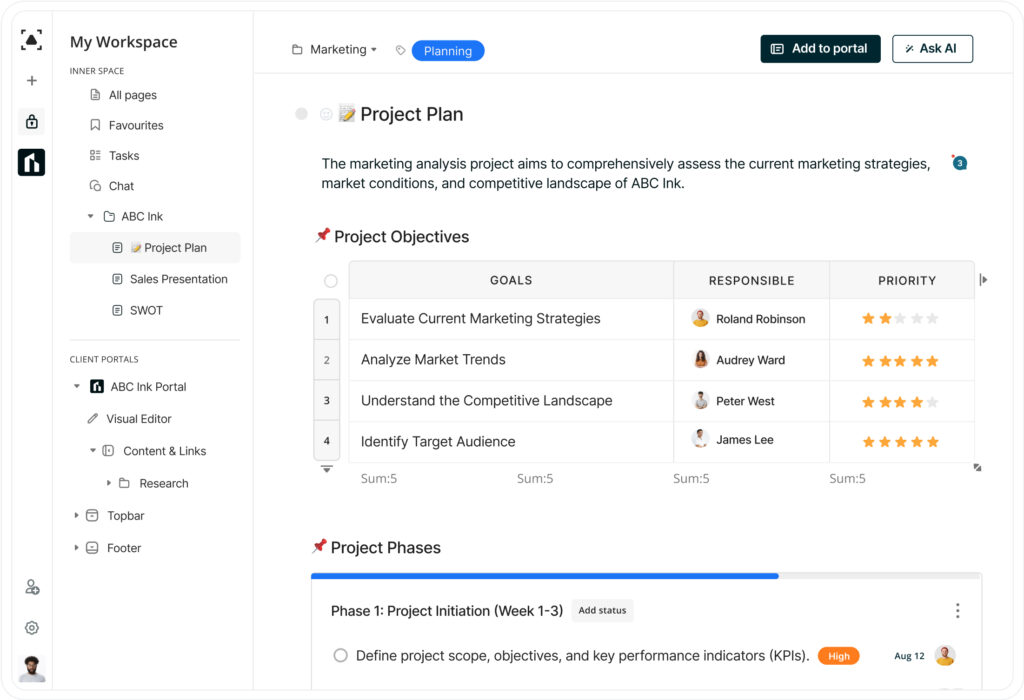
8 Ways a Hybrid Work Model Could Fail and How to Avoid Them
- October 6, 2023
- 10 Min read
The coronavirus pandemic, which began in the year 2020, has dramatically changed how we work and our preferences. Just imagine: a few years ago, working remotely was considered more of an exception to the rule, and many of us spent several hours a day commuting to and from work. Then, with the onset of lockdowns, we all switched to working from home.
Over the past two years, many have missed their colleagues and the atmosphere of the office. At the same time, a big percent of people would like to continue working out of the office after the pandemic is over. The solution is a hybrid model where teams work both from home and have in-office days.
According to research commissioned by Slack last year, 63 percent of respondents value the flexibility of a hybrid work model. 20 percent would like to always work remotely, and only 17 percent want to return to work in the office.
And while the hybrid work model has indeed become a salvation for many companies this year, such models fail quite often. This article will cover the main reasons for failure and the best practices to avoid them.
What does Hybrid Work Mean?
A hybrid work model is a format in which company employees are not required to be in the office all the time and can visit it on certain days. Also, hybrid work sometimes implies that only people in certain positions should work in the office, while everyone else can continue working from home.
The hybrid work model is not an invention of the year in the 2020s. Some companies have been operating this way before the pandemic. However, many more companies worldwide are now developing their variations of the hybrid model. This approach will likely stay with us forever as a compromise between working from home and working from the office. The consulting company Gartner named this work format one of the expected trends this year.
Hybrid work model options
Companies are developing their own hybrid work models most suitable for their specific niche and employees. In general, there are four main practices:
- The company determines in-office and at-home work days. So, Apple employees must work from the offices on Mondays, Tuesdays and Thursdays this year.
- The company assigns the minimum possible number of days employees must spend in the office. For example, employees can work from home for three weeks and work from the office for one week.
- The company has established a remote work mode, but employees can go to the office according to their preferences.
- Only those employees whose work processes cannot be performed remotely are present in the office; the rest of the colleagues work from home.
Benefits of Hybrid Work Models
The practice that combines remote and office work has quite a few advantages. That is why it has become so popular this year.
- Companies can hire employees regardless of their location. If the hybrid work format means that employees can visit the office at will, or only some employees must work from the office, the rest can perform tasks remotely. This means that companies can hire people from other cities and even countries for some positions who are excellent at their duties but cannot be present in the office.
- Employees get more benefits from working out of the office. Free office visits give employees more independence. They can distribute their tasks themselves and feel more comfortable. For example, a huge percent of people prefer to go to the office to discuss joint projects but work at home on tasks that require concentration. According to a Jabra survey, 61 percent of workers would like to be able to visit the office when needed. For 59 percent of respondents, such flexibility is even more important than salary and other benefits.
- It is easier for companies to switch to fully remote work. Recent years have shown that we never know what will happen next. It may seem that the pandemic is already over, but this is not entirely true. Businesses that develop their flexibility and stick to a hybrid way of working will be more competitive in the event of a new lockdown.
- Less office maintenance costs. Not having a full staff in the office means a lot less spending on utility bills, coffee and cookies, cleaners’ salaries, new equipment purchases and so on. In addition, some companies may reduce the leased space of offices or even close some offices.
8 Reasons a Hybrid Work Model Might Fail and Tips to Improve It
Despite all the advantages and popularity of the hybrid work model, some companies’ models fail. If you do not pay attention to them in time and do not take action, your company may fall into chaos; productivity will plummet, and there’s a chance of total failure. Here are the main signs that something is going wrong and our tips on what to do to prevent failure.
Schedules are still rigid
The hybrid work model is primarily about flexibility. Employee productivity can be greatly reduced if you are not flexible about when employees do their jobs.
Even if you have set in-office and at-home days, the workday schedule cannot remain the same as before the pandemic – this will lead to a total failure. People are used to being able to take the time to care for their parents, children and their own medical needs.
What to do: Instead of the traditional 9 AM to 6 PM schedule (or whatever schedule your company had before the pandemic), review the new rules and schedule a time to work together. These could be specific hours for Zoom calls or personal meetings.
Employees are treated unfairly in offices
When people return to offices, they tend to revert to the old way of doing things. However, this is the way to failure: people who have worked constantly in offices will dominate meetings with their opinions and suggestions. Since employees who previously worked remotely remain strangers to many, their preferences and ideas will be less listened to.
What to do: To prevent this kind of unfairness, find the right Zoom plan for you or other means of communication, and hold virtual meetings. Even if employees are not present in the offices today, they must be able to speak out, and their colleagues who work from the offices must learn to take their opinion into account. You must create a level playing field for everyone.
Many employees are limited in their opportunities
Your employees may feel differently about the hybrid work model and may have their own reasons for this. These reasons strongly influence how employees will receive the news about the transition to a hybrid work model and how they will adapt.
If hybrid work limits employees’ opportunities and preferences in some way, they will resist it or simply quit.
What to do: Don’t assume that everyone in your office wants the same thing. Before developing your hybrid work structure, talk personally with each employee and hear their concerns and preferences.
Too many technologies and apps
Employees can feel overwhelmed by constantly switching between many different collaboration applications throughout the work day. Many believe that this approach negatively affects productivity in a hybrid work model.
In fact, people are spending too much time trying to contact colleagues. They may meet someone in the hallway, have to call other employees on Zoom and chat with others on messengers as they are in a different time zone. Establishing effective communication and collaboration with a minimum of technological applications can be difficult.
What to do: Try to minimize the number of applications required for employees’ work. Ideally, you should have a single online workspace to which each employee will have access. This is exactly the service FuseBase offers – it allows you to create a portal for employees and work on projects in one place.
Try FuseBase to manage all your online teamwork in one place
Relationships get strained
In many companies where employees are accustomed to working remotely, there has been much less interaction between employees and superiors recently. Hybrid work means a lot more meetings and discussions with executives. However, many people have already weaned from the need to contact their bosses and prefer to sit quietly at their workplace. This does not contribute to a healthy atmosphere in the team and may result in conflict one day.
What to do: Work on re-engaging employees with the entire team. Organize group lunches and picnics, and find time for personal meetings between employees and their superiors.
Schedule confusion
Let’s say your company has chosen a hybrid work mode and set in-office and at-home days, when some employees go to work in the office on certain days and other team members come on other days. But are you sure everyone knows who works from the office or home every day? Meetings and important discussions can be derailed if every employee does not have information about who is working in the office, who is working from home and who has taken sick leave on a specific day.
What to do: Create a table where each employee will select their in-office days. This spreadsheet should be available to all colleagues so they can schedule their meetings accordingly.
Too many emails
When all companies worked remotely during the lockdown, team members mostly communicated through instant messengers and emails. Then video calls became popular, but people quickly got tired of Zoom and returned to electronic communication.
But this is not always the most effective method of communication, especially if your team is now working on a hybrid model. Why send hundreds of emails when your colleagues are now sitting next to you again, at least occasionally?
What to do: Connect more with people in person. Schedule a meeting in the office if you want to share company news with employees or present a new product. Leave emails only in case too many people are involved or messages need to be sent to all colleagues in different cities. In other cases, calling briefly or meeting in person is better.
Return to old practices
Hybrid work is different from fully remote work and office work. A way to failure is a return to the past rules and regulations. For example, some companies that have partially returned to the office have also returned to using hundreds of physical documents that need to be printed and signed. Others, on the contrary, try to introduce all the advanced elements of remote work that do not really apply to the hybrid format.
What to do: Understand that it will take time for you to set up all the processes in your company again. Study how different departments work, hold meetings with them, develop best practices on synchronous collaboration and implement them. And definitely get rid of tons of unnecessary documents – go paperless!
How FuseBase Can Help Set Up Hybrid Work

While some employees work in the office, others work remotely. Many have different schedules, so effective synchronous collaboration can be difficult. FuseBase offers powerful collaboration tools for teams that work in any format – remote, in the office or a hybrid mode.
With FuseBase , you can create documents accessible to all team members and work on them simultaneously from anywhere in the world. FuseBase is a single place to store and manage your information, tasks, projects and knowledge bases with high data protection. Create to-do lists and public pages for your team, keep project documentation in one place, and the hybrid workflow will become much easier for you. Try FuseBase today with a free demo!
Join our LinkedIn page for more FuseBase updates and new articles!
Found it useful? Share the article with your community
Subscribe to our blog!
Get weekly tips and insights on how to grow your business